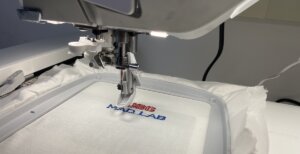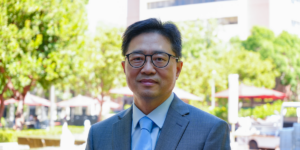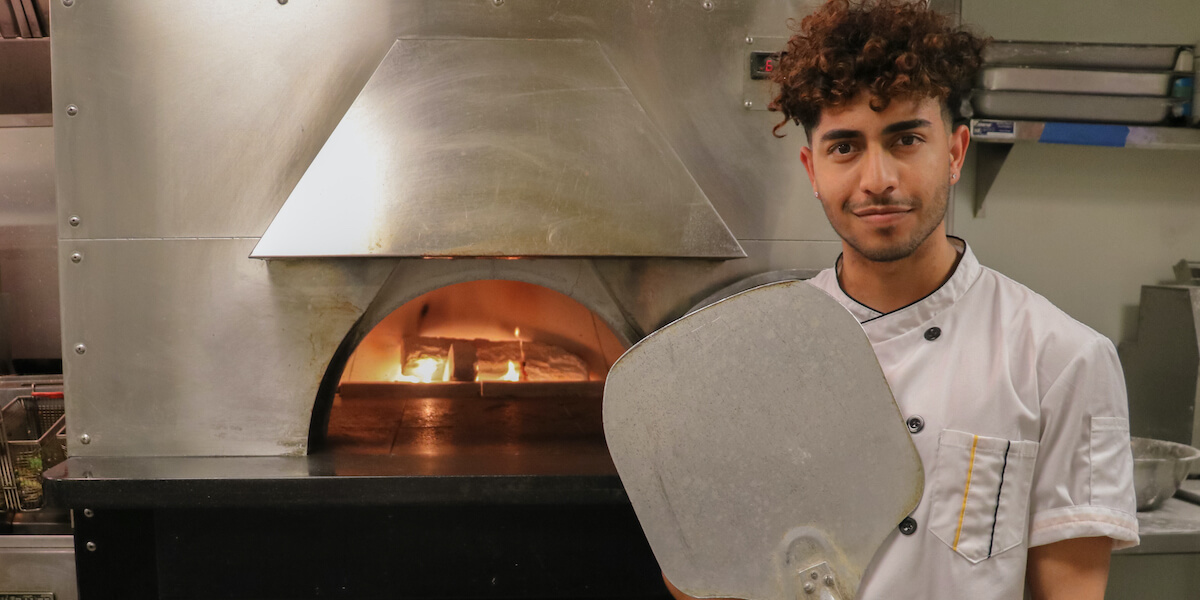
Jose Hernandez is researching safety culture in restaurant kitchens. Image/Jose Caceres Jr. Photo editing/Melissa Hernandez
Jose Hernandez is not kidding when he says he likes to stay busy. Not only is he a Bill and Melinda Gates Scholar studying a progressive degree toward his master’s in Industrial and Systems Engineering, but he’s also taking classes in stand-up comedy. If that weren’t enough, Hernandez also works as a cook in not one, but three bustling downtown Los Angeles restaurants.
“Honestly, I get bored when I have too much free time,” Hernandez laughed. “I like to have my schedule very tightly planned out … it works out well for me.”
Born in Tijuana, Mexico and growing up in San Diego, Hernandez was raised with a love of food. As a kid, he would often play assistant chef to his mother and grandmother who are experts in the kitchen. His favorite birthday treat each year: his grandma’s Mexican pozole stew.
When the pandemic hit in 2020, he decided to take a gap year and put his culinary background to good use, firstly as a dish washer in a busy DTLA restaurant. But as lockdowns slowed business, many of the restaurant staff needed to be let go.
“The chef had to lay off most of the cooks, but he left me because he didn’t want to wash dishes,” Hernandez said.
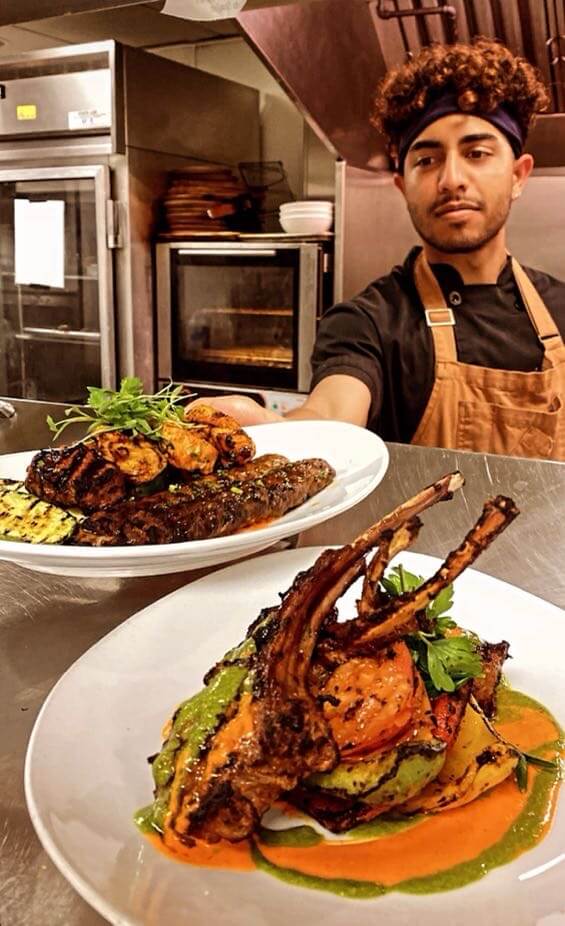
ISE student Jose Hernandez works as a cook in three busy downtown LA restaurants. Image/Jose Caceres Jr. Photo editing/Melissa Hernandez
Working one-on-one with the chef, Hernandez began to help with the meal preparation and quickly rose-up the ranks from dish washer to line cook across the three busy sister restaurants. But the high-pressure maelstrom of a restaurant kitchen is hardly laid-back part-time student work. Cooks and restaurant staff are faced with intense time pressure, head chefs who expect perfection and increasingly demanding customers. The long hours and dizzying pace can sometimes cause physical and mental health and safety concerns for staff.
As Hernandez resumed his studies following his gap year, he took Professor of Civil and Environmental Engineering, Industrial Systems Engineering, and International Relations Najmedin Meshkati’s class, ISE 370 Human Factors in Work Design.
Meshkati is a leading expert in the field of organizational safety culture, particularly in relation to nuclear power plants such as Chernobyl in Ukraine, which in April 1986 become one of the world’s most famous and catastrophic organizational safety failures. When an explosion and fire began in Chernobyl’s Number Four reactor, a combination of bad design, poorly trained staff and a series of ignored safety protocols caused 31 deaths in the immediate aftermath, as well as the contamination of nearly 60,000 square miles of terrain in Ukraine, Belarus and Russia.
Since then, safety culture has become a more prominent field that focuses on a commitment from an organization’s leaders and workers to value the safety of humans and the environment above all other factors and interests.
Hernandez started to notice concepts in his coursework that could be applied to restaurant kitchens in a way that had never been done before in safety culture research. This year, Hernandez presented his work at the 17th Annual Human Factors Engineering Society (HFES) Student Chapter Conference at Cal State Long Beach.
Hernandez said that as he began to learn about topics such as effective safety communication in the workplace and respectful work environments, he saw an exciting potential to apply safety culture research concepts across the restaurant industry.
“I was seeing a lot of good crossovers,” Hernandez said. “When it came time to write the term paper, I spoke with Professor Meshkati and he said, ‘nobody has ever done anything about the implications of the U.S. Nuclear Regulatory Commission (NRC) and the Institute of Nuclear Power Operations (INPO), Traits of a Healthy Nuclear Safety Culture in a restaurant kitchen, so why don’t you investigate it?’”
Hernandez said that the restaurant industry has a significant focus on customer experience above all else. He said research also showed a high level of drug and alcohol dependency in the sector, as chefs and restaurant staff feel intense pressure to maintain the level of alertness needed to deliver high-quality customer experiences at a rapid pace, across increasingly brutal shifts. This, coupled with working with high heat in confined spaces, can raise a range of safety issues.
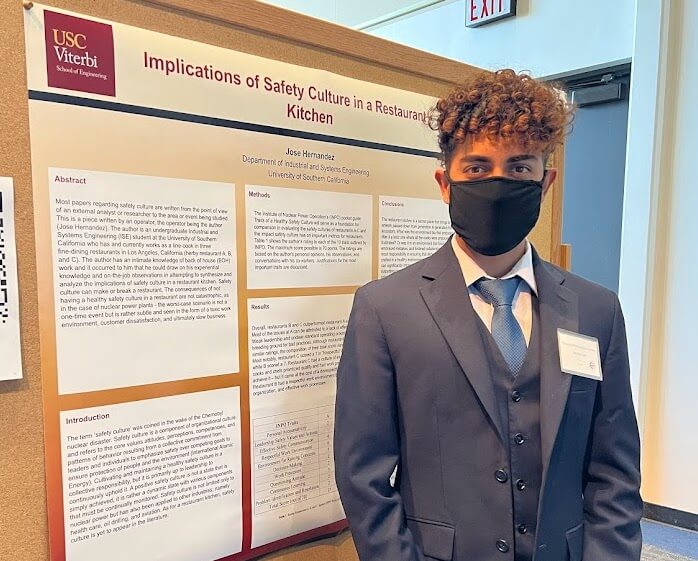
Jose Hernandez presenting his research at the 17th Annual Human Factors Engineering Society (HFES) Student Chapter Conference. Image/Jose Hernandez
“It’s a high stress situation. It’s very hot. There’s a lot of noise and it’s easy to get frustrated in that type of environment,” Hernandez said. “Now if you combine that with alcohol and drug use, which is very rampant in the industry, it can be like a ticking bomb. If we’re talking about safety culture, it affects things like a respectful work environment. It’s normal to see a lot of yelling, but this is often expected to be just part of the job.”
Hernandez said while some staff thrive under that type of organizational culture, for others it can lead to serious physical and mental health concerns, as cited in a recent report exposing the issues arising out of an unhappy work culture at a two-Michelin Star Los Angeles restaurant.
“It definitely affects the staff on a psychological level when you’re working 12-hour shifts in that environment,” Hernandez said.
Hernandez said that having a strong culture with a focus on safety also worked for the benefit of a restaurant’s bottom line. His research examined food quality and output as a result of kitchen culture, finding that workplaces that were fostering safe and positive environments produced a more consistent food quality for customers.
“I’ve had experiences in kitchens that have not been good, but a lot of my experiences have been very good,” Hernandez said. “I’ve worked with cooks that know how to work really well together and I’ve had chefs that use positive reinforcement rather than negative reinforcement to coach you. When you have an environment like that, it really shows in the dishes you are presenting to your customers.”
Hernandez is currently furthering his research and working with Meshkati on his manuscript for journal submission.
Published on June 24th, 2022
Last updated on June 24th, 2022







